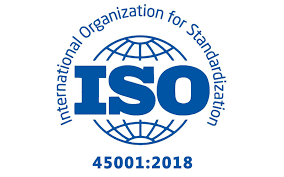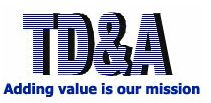
ISO 45001: International Standard for Occupational Health and Safety Management Systems
ISO 45001 is an international standard that specifies requirements for an Occupational Health and Safety (OH&S) management system, along with guidance for its use. It enables organizations to proactively improve OH&S performance by preventing work-related injuries and ill-health.
The standard is designed to be applicable to any organization, regardless of size, type, or industry. All ISO 45001 requirements can be integrated into the organization’s overall management processes.
ISO 45001 also allows organizations to incorporate other aspects of worker health and safety, such as well-being and occupational health, although these may also be subject to legal and regulatory obligations in different countries.
History and Background
Before ISO 45001 – OHSAS 18001
Before ISO 45001 was introduced, most organizations used OHSAS 18001 (Occupational Health and Safety Assessment Series), first published in 1999 by a consortium of national standardization bodies and certification agencies.
- OHSAS 18001 became widely adopted as a benchmark for establishing OH&S management systems.
- However, it was not an official standard from the International Organization for Standardization (ISO).
The Development of ISO 45001
Recognizing the need for a globally recognized and ISO-approved OH&S standard, ISO began developing ISO 45001 in 2013, aiming for better alignment with other ISO management system standards such as ISO 9001 (Quality) and ISO 14001 (Environment).
- The development involved over 70 countries and took nearly five years.
- Officially published on March 12, 2018, the standard is titled:
ISO 45001:2018 – Occupational Health and Safety Management Systems – Requirements with guidance for use.
Replacing OHSAS 18001
- Following the release of ISO 45001:2018, OHSAS 18001 was officially withdrawn on September 30, 2021.
- Organizations previously certified under OHSAS 18001 were given a 3-year transition period to migrate to ISO 45001.
Key Highlights of ISO 45001
ISO 45001 introduces several new features and improvements compared to OHSAS 18001:
- Adopts the High-Level Structure (HLS): Aligns with ISO 9001 and ISO 14001 for easier integration.
- Stronger emphasis on leadership: Top management must take a more active role in promoting OH&S culture.
- Worker participation: Employee involvement in decision-making and hazard identification is a core requirement.
- Risk and opportunity management: Broader focus on identifying and managing both risks and opportunities.
- Integrated management: Designed to be easily implemented alongside other ISO standards.
ISO 45001 Requirements

Benefits of Implementing ISO 45001 Standard
The ISO 45001 standard, based on the Occupational Health and Safety (OH&S) Management System, enables organizations to improve their OH&S performance by:
- Establishing and implementing OH&S policies and objectives
- Setting up systematic processes that consider the organization’s "context", legal requirements, and both risks and opportunities
- Identifying OH&S hazards and risks associated with organizational activities; aiming to eliminate or control them to minimize potential impacts
- Implementing operational controls to manage OH&S risks, legal, and other applicable requirements
- Raising awareness of OH&S risks across the organization
- Evaluating OH&S performance and seeking continuous improvement through appropriate actions
- Ensuring workers are actively involved in OH&S matters
Implementing these measures not only enhances the organization’s reputation as a safe workplace but also provides direct benefits such as:
- Improved ability to meet legal and regulatory compliance
- Reduced accident-related costs
- Decreased downtime and disruption-related expenses
- Lower insurance premiums
- Reduced absenteeism and employee turnover
- Recognition of compliance with international standards, appealing to socially responsible clients
Who Can Apply ISO 45001?
Simply put, ISO 45001 is applicable to all types of organizations.
Whether you are a small business, a multinational corporation, a non-profit organization, a charity, a training institution, or a government entity—if your organization has workers or people who could be affected by its activities, adopting a health and safety management system will bring value.
The standard can be used by organizations with both low-risk and high-risk operations. While ISO 45001 requires the identification and control of OH&S risks, it also adopts a risk-based approach to ensure that:
- a. the system is effective, and
- b. it can be improved continuously to meet the organization's changing context.
This risk-based approach aligns with how businesses manage other types of "business risks", encouraging integration of the standard's requirements into the organization's overall management processes.
How Does ISO 45001 Relate to Other ISO Standards?
ISO 45001 follows the High-Level Structure (HLS), which is consistent across other ISO management system standards such as ISO 9001 (Quality Management) and ISO 14001 (Environmental Management). During its development, ISO 45001 also took into account content from international standards like OHSAS 18001, the ILO-OSH Guidelines by the International Labour Organization (ILO), national standards, and ILO conventions (ILSs).
When adopted, organizations will find that ISO 45001 requirements align well with those of other ISO standards. This makes transitioning from existing OH&S management systems to ISO 45001 much smoother, and supports seamless integration of multiple ISO standards into the organization’s management framework.
